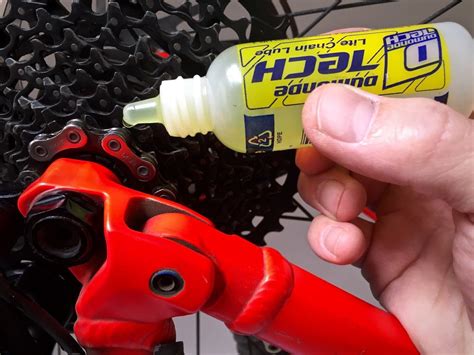Mastering Bike Chain Lubrication: A Comprehensive Guide
Keeping your bike chain properly lubricated is crucial for smooth shifting, efficient power transfer, and extending the lifespan of your drivetrain. A neglected chain leads to premature wear, increased friction, and ultimately, expensive repairs. This comprehensive guide will walk you through everything you need to know about mastering bike chain lubrication.
Why is Bike Chain Lubrication Important?
Regular lubrication minimizes friction between the chain's rollers and the cassette and chainrings. This reduces wear and tear on all components, leading to smoother shifting and a more enjoyable ride. A well-lubricated chain also translates to better power transfer – meaning more of your effort goes into propelling you forward, instead of being lost to friction. Ignoring lubrication will eventually lead to a noisy, gritty chain, and potentially damaged components.
What Type of Lubricant Should I Use?
The best lubricant depends on your riding conditions. There are several types available:
- Wet Lubricants: These are thicker and stickier, ideal for wet and muddy conditions. They offer longer-lasting protection but can attract more dirt.
- Dry Lubricants: Thinner and designed for dry conditions. They offer less protection against dirt and grime, requiring more frequent application, but are less likely to attract dirt.
- Wax-Based Lubricants: These offer excellent performance, providing a smooth and efficient chain. They are typically applied through a specific process that may require additional tools and expertise.
Choosing the right lubricant is crucial. Consider your usual riding environment: frequent rain and mud call for a wet lubricant, while dry, dusty conditions are better suited to a dry lubricant.
How Often Should I Lubricate My Bike Chain?
There's no single answer; the frequency depends on several factors, including riding conditions, the type of lubricant used, and your riding intensity. As a general rule:
- Wet conditions: Lubricate after every ride or every other ride.
- Dry conditions: Every 100-200 miles, or every few rides.
- Regular checks: Visually inspect your chain regularly. If it looks dry or gritty, it's time to lubricate.
How to Lubricate Your Bike Chain: A Step-by-Step Guide
- Clean your chain: Use a degreaser and a chain cleaning tool or brush to thoroughly remove dirt, grime, and old lubricant. Wipe the chain dry with a clean rag. This is arguably the most important step.
- Apply lubricant: Apply a small amount of lubricant to the inside of each chain link, focusing on the rollers. Avoid excessive lubrication, as this will attract more dirt.
- Let it sit: Allow the lubricant to penetrate for a few minutes.
- Wipe off excess: Use a clean rag to wipe away any excess lubricant from the chain, cassette, and chainrings. Excess lubricant attracts dirt and can lead to a messy drivetrain.
- Test ride: Take your bike for a short test ride to allow the lubricant to distribute evenly.
What is the best way to clean a bike chain?
Cleaning your bike chain effectively removes grit and old lubricant, maximizing the effectiveness of fresh lubrication. Use a dedicated chain cleaning tool or a soft brush along with a degreaser designed specifically for bicycle chains. Apply the degreaser, scrub the chain thoroughly, and then rinse the chain with water or wipe it down with a clean cloth. Ensuring your chain is completely clean before re-lubrication is critical.
How do I know if my bike chain needs replacing?
A worn-out chain can significantly impact your drivetrain’s performance and efficiency. Look for signs such as excessive stretching, stiff links, and difficulty shifting. A chain checker tool can precisely measure chain wear, indicating when replacement is necessary. Replacing your chain before it causes damage to other components is a good investment in your bike's longevity.
Can I use WD-40 to lubricate my bike chain?
No, WD-40 is not suitable for lubricating bike chains. While it displaces moisture, it doesn't provide the necessary lubrication and can actually damage the chain over time. Use a bicycle-specific chain lubricant instead.
What are the signs of a poorly lubricated bike chain?
A poorly lubricated chain is typically characterized by noisy shifting, stiff pedaling, and reduced power transfer. You might hear a gritty sound or feel resistance when pedaling. Regular inspection and maintenance are key to preventing these issues.
By following these steps and choosing the right lubricant for your riding conditions, you'll keep your bike chain running smoothly and efficiently for many miles to come. Remember, consistent lubrication is a small investment that yields significant returns in terms of performance and the longevity of your bike's drivetrain.

